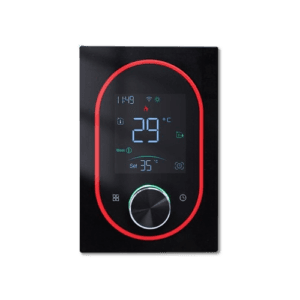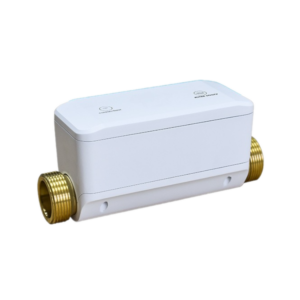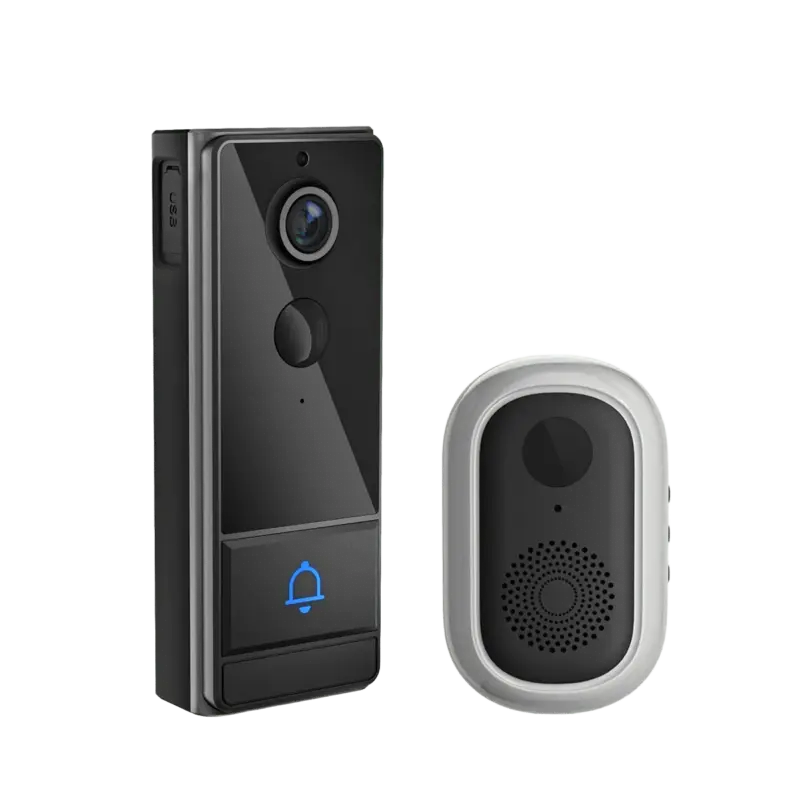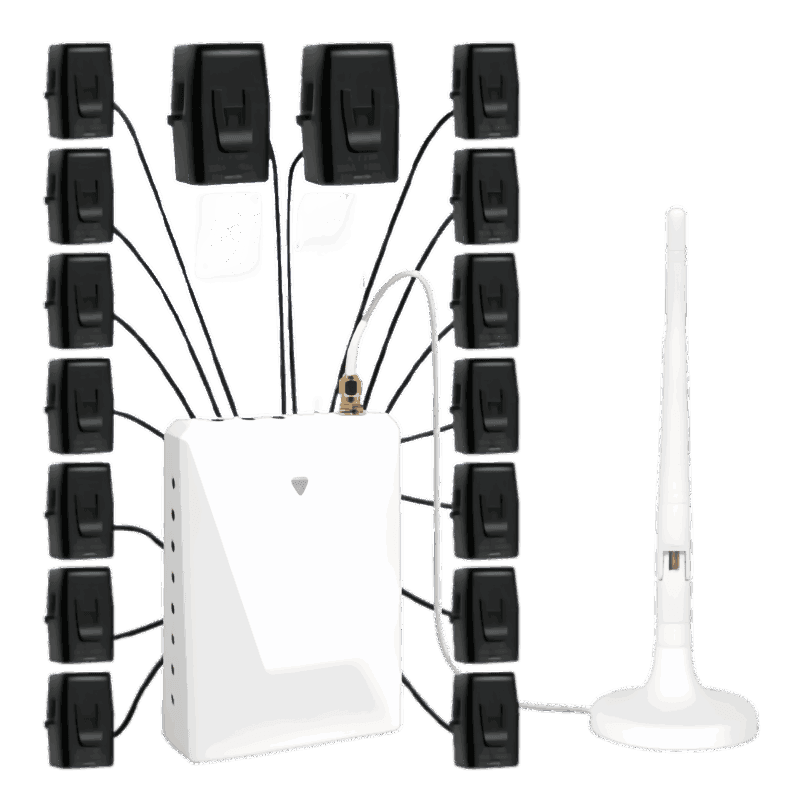North America operates on multiple voltage systems, each serving specific applications in residential, commercial, and industrial environments. Understanding these systems is essential for:
✅ Choosing the right electrical equipment
✅ Ensuring safe and efficient wiring configurations
✅ Optimizing power distribution for homes and businesses
In this guide, we'll cover:
✔ 120/240V – The standard for North American homes
✔ 120/208V – Used in commercial buildings & multi-unit residences
✔ 277/480V – High-power applications in industrial settings
✔ Wiring configurations and applications for each system
1. Overview of North American Electrical Systems
North America primarily operates on split-phase and three-phase power distribution:

- Single-Phase (Split-Phase) 120/240V → Used in residential homes.
- Three-Phase 120/208V → Common in commercial buildings, office spaces, and apartments.
- Three-Phase 277/480V → Used in large industrial plants and commercial lighting systems.
--- title: "North American Voltage Distribution" --- graph TD; A["Utility Power Grid"] -->|High Voltage Transmission| B["Primary Transformer"] B -->|Step Down Voltage| C["Local Distribution Transformer"] C -->|Provides Split-Phase 120/240V| D["Residential Homes"] C -->|Provides Three-Phase 120/208V| E["Commercial Buildings"] C -->|Provides Three-Phase 277/480V| F["Industrial Facilities"]
2. 120/240V Split-Phase Power (Residential Homes)
2.1 What is 120/240V?
- Standard residential voltage in the U.S. and Canada.
- Delivered as split-phase power, meaning two hot (L1, L2) conductors and a neutral.
- Provides 120V for standard outlets and 240V for high-power appliances.
2.2 Wiring Configuration
📌 120V Circuits: One hot (L1 or L2) + Neutral
📌 240V Circuits: Two hot (L1 + L2), no neutral
--- title: "120/240V Split-Phase Home Wiring" --- graph TD; A["Utility Transformer"] -->|"L1 (120V to Neutral)"| B["Main Panel"] A -->|"L2 (120V to Neutral)"| B B -->|"L1 to Neutral (120V)"| C["Standard Outlets & Lighting"] B -->|"L2 to Neutral (120V)"| D["Additional Home Circuits"] B -->|"L1 to L2 (240V)"| E["High-Power Appliances (Dryer, Oven, EV Charger)"]
2.3 Common Household Applications
| Appliance | Voltage Required | Why? |
|---|---|---|
| Standard Outlets | 120V | Small appliances, lighting |
| HVAC Systems | 120V or 240V | Some require 240V for efficiency |
| Electric Stove/Oven | 240V | High power requirement |
| Electric Water Heater | 240V | Faster heating capacity |
| EV Chargers | 240V | More efficient charging |
📌 Key Takeaway: 120/240V split-phase power is designed for home energy efficiency, balancing low and high-power needs.
3. 120/208V Three-Phase Power (Commercial & Multi-Unit Buildings)
3.1 What is 120/208V?
- Used in commercial buildings, apartment complexes, and offices.
- Three-phase power, meaning it includes three hot conductors (L1, L2, L3) and a neutral.
- Provides 120V single-phase power for standard outlets and 208V for larger loads.
3.2 Wiring Configuration
📌 120V Circuits: One hot (L1, L2, or L3) + Neutral
📌 208V Circuits: Two hot conductors (L1 + L2, L2 + L3, or L1 + L3)
--- title: "120/208V Three-Phase Wiring" --- graph TD; A["Utility Transformer (Three-Phase)"] -->|"L1 (120V to Neutral)"| B["Main Panel"] A -->|"L2 (120V to Neutral)"| B A -->|"L3 (120V to Neutral)"| B B -->|"L1 to Neutral (120V)"| C["Standard Outlets & Lighting"] B -->|"L2 to Neutral (120V)"| D["Additional Building Circuits"] B -->|"L1 to L2 (208V)"| E["Commercial HVAC & Cooking Equipment"] B -->|"L2 to L3 (208V)"| F["Elevators & Pumps"] B -->|"L1 to L3 (208V)"| G["Office Server Rooms & IT Loads"]
3.3 Common Applications in Commercial & Multi-Unit Buildings
| Application | Voltage Required | Why? |
|---|---|---|
| Office Outlets | 120V | Powering standard office equipment |
| Lighting Systems | 120V | Fluorescent and LED fixtures |
| Commercial HVAC | 208V | Efficient power supply for large buildings |
| Industrial Kitchen Equipment | 208V | Ovens, coffee machines, dishwashers |
| Data Centers & IT Equipment | 208V | Efficient power supply for server racks |
📌 Key Takeaway: 120/208V power is commonly found in businesses and apartment buildings because it efficiently balances power distribution across three phases.
4. 277/480V Three-Phase Power (Industrial & Large Commercial Use)
4.1 What is 277/480V?
- Designed for industrial buildings, factories, and large office spaces.
- Uses a three-phase system with higher voltage (L1, L2, L3, Neutral).
- Provides 277V for lighting systems and 480V for high-power equipment.
4.2 Wiring Configuration
📌 277V Circuits: One hot conductor (L1, L2, or L3) + Neutral
📌 480V Circuits: Two hot conductors (L1 + L2, L2 + L3, or L1 + L3)
--- title: "277/480V Three-Phase Wiring" --- graph TD; A["Utility Transformer (High Voltage)"] -->|"L1 (277V to Neutral)"| B["Main Panel"] A -->|"L2 (277V to Neutral)"| B A -->|"L3 (277V to Neutral)"| B B -->|"L1 to Neutral (277V)"| C["Commercial Lighting Systems"] B -->|"L2 to Neutral (277V)"| D["Office Floor Power"] B -->|"L1 to L2 (480V)"| E["Heavy Industrial Motors"] B -->|"L2 to L3 (480V)"| F["Large HVAC & Refrigeration"] B -->|"L1 to L3 (480V)"| G["High-Power Manufacturing Equipment"]
4.3 Common Industrial & Commercial Applications
| Application | Voltage Required | Why? |
|---|---|---|
| Commercial Lighting | 277V | Efficient, low-loss lighting for large spaces |
| High-Power HVAC Systems | 480V | Used in industrial cooling and heating |
| Large Machinery | 480V | Provides high efficiency and lower current draw |
| Data Centers & Large IT Infrastructure | 480V | Used for high-performance computing |
| Manufacturing Equipment | 480V | Supports heavy loads in production facilities |
📌 Key Takeaway: 277/480V is preferred for large-scale operations where energy efficiency and high power demand are critical.
5. Which Grus Smart Meter is Right for Each Voltage System?
Choosing the right smart energy monitor depends on the voltage system in use. Below is a comparison of Grus smart meters and their compatibility:
| Best for Voltage System | Grus Smart Meter | Application |
|---|---|---|
| 120/240V Split-Phase | WattNet-1 WattPanel-2X | Homeowners monitoring total household energy |
| 120/208V Three-Phase | WattNet-3 WattPanel-3X | Commercial buildings, apartment complexes |
| 277/480V Three-Phase | WattNet-3 WattPanel-3X | Industrial plants, manufacturing, data centers |
📌 Why Use Grus Smart Meters?
✅ Real-time energy tracking – Monitor grid, solar, and battery energy.
✅ AI-powered efficiency optimization – Detect power waste and inefficiencies.
✅ Easy integration with SmartThings, Alexa, and Google Home.
6. How to Determine Which Voltage System is Right for You?
The choice between 120/240V, 120/208V, and 277/480V depends on several factors, including the type of building, power requirements, and intended applications.
6.1 Residential Homes – 120/240V Split-Phase
✔ Best for: Single-family homes, townhouses, and small businesses
✔ Why? Provides both 120V for standard appliances and 240V for high-power devices
✔ Common Applications: Lighting, HVAC, water heaters, electric stoves, EV chargers
6.2 Commercial Buildings – 120/208V Three-Phase
✔ Best for: Office buildings, multi-family apartments, small commercial spaces
✔ Why? Three-phase power ensures balanced electrical loads, reducing wear on equipment
✔ Common Applications: Lighting, HVAC, elevators, commercial kitchens, IT infrastructure
6.3 Industrial Facilities – 277/480V Three-Phase
✔ Best for: Factories, data centers, high-power industrial operations
✔ Why? Higher voltage provides more efficient power transmission and lower energy loss
✔ Common Applications: Manufacturing equipment, large motors, commercial lighting, industrial HVAC
📌 Key Takeaway: Choosing the right voltage system depends on energy demand, efficiency needs, and building infrastructure.
7. How to Install a Grus Smart Energy Monitor for Each Voltage System
Using Grus smart meters allows homeowners, businesses, and industries to track real-time power usage, optimize energy efficiency, and reduce waste. Below is a step-by-step installation guide for each voltage system.
7.1 Installation Guide for 120/240V Split-Phase (Homes)
📌 Recommended Smart Meter: WattPanel-2X
✅ Installation Steps:
1️⃣ Turn off power at the main breaker.
2️⃣ Open the electrical panel and identify the L1 & L2 conductors.
3️⃣ Attach the CT clamps around both L1 & L2 wires to measure total energy usage.
4️⃣ Connect the monitor to WiFi and set up the mobile app.
5️⃣ Start tracking real-time energy usage!
--- title: "Installation of Grus Smart Meter (120/240V)" --- graph TD; A["Turn Off Main Breaker"] --> B["Install CT Clamps on L1 & L2"] B --> C["Connect Smart Monitor"] C --> D["Sync with Grus App"] D --> E["Start Monitoring Home Energy Usage"]
📌 Benefits:
✔ Detect high-energy-consuming appliances
✔ Track solar & battery storage integration
✔ Optimize EV charging and HVAC efficiency
7.2 Installation Guide for 120/208V Three-Phase (Commercial Buildings)
📌 Recommended Smart Meter: WattNet-3
✅ Installation Steps:
1️⃣ Shut off power at the main panel.
2️⃣ Locate L1, L2, and L3 wires inside the electrical panel.
3️⃣ Attach CT clamps to each phase conductor to measure power flow.
4️⃣ Connect the smart meter to WiFi and configure monitoring settings.
5️⃣ Use the Grus dashboard to track energy use across all building circuits.
📌 Benefits:
✔ Helps businesses monitor real-time energy usage
✔ Prevents power imbalance across three-phase systems
✔ Optimizes energy costs in multi-unit buildings
7.3 Installation Guide for 277/480V Three-Phase (Industrial Facilities)
📌 Recommended Smart Meter: WattPanel-3X
✅ Installation Steps:
1️⃣ Turn off high-voltage circuit breakers for safety.
2️⃣ Attach CT clamps to L1, L2, and L3 conductors to measure power distribution.
3️⃣ Secure voltage reference wires to accurately measure load balance.
4️⃣ Connect the meter to the monitoring network for live data insights.
5️⃣ Use AI-driven analytics to optimize large-scale energy usage.
📌 Benefits:
✔ Reduces downtime in industrial environments
✔ Helps factories & data centers manage high-energy loads
✔ Prevents inefficiencies in heavy machinery operations
Choosing the right voltage system and smart energy monitor is critical for efficiency, cost savings, and sustainability.
Best Grus Smart Meters by Voltage Type
| Grus Smart Meter | Best for Voltage System | Application |
|---|---|---|
| WattPanel-2X | 120/240V Split-Phase | Homes, small businesses |
| WattNet-3 | 120/208V Three-Phase | Commercial buildings, apartments |
| WattPanel-3X | 277/480V Three-Phase | Industrial plants, factories |
✅ Track energy usage in real-time
✅ Prevent waste & reduce electricity costs
✅ Seamless integration with SmartThings, Alexa & Google Home🚀 Upgrade your home or business with Grus Smart Energy Monitors!
👉 Get Yours Today



